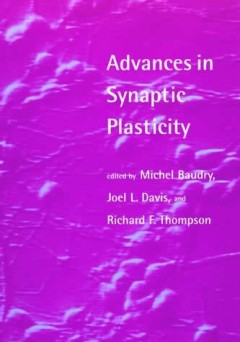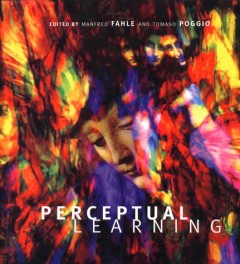Filter by

Neuroplasticity
The real story of how our brains and nervous systems change throughout our lifetimes -- with or without ""brain training."""Fifty years ago, neuroscientists thought that a mature brain was fixed like a fly in amber, unable to change. Today, we know that our brains and nervous systems change throughout our lifetimes. This concept of neuroplasticity has captured the imagination of a public eager …
- Edition
- -
- ISBN/ISSN
- 9780262337069
- Collation
- 1 online resource (x, 181 pages).
- Series Title
- -
- Call Number
- -

Nurturing the older brain and mind
The authors show that scientific research does not support the notion of the inexorable and progressive effects of cognitive aging in all older adults. They report that many adults maintain a high level of cognitive function into old age and that certain lifestyle factors contribute to the preservation of cognitive abilities.OCLC-licensed vendor bibliographic record.
- Edition
- -
- ISBN/ISSN
- 9780262301336
- Collation
- 1 online resource (xii, 329 pages) :illustrations (some color)
- Series Title
- -
- Call Number
- -

The dynamic neuron
"A Bradford book."The traditional model of synapses as fixed structures has been replaced by a dynamic one in which synapses are constantly being deleted and replaced. This book, written by a leading researcher on the neurochemistry of schizophrenia, integrates material from neuroscience and cell biology to provide a comprehensive account of our current knowledge of the neurochemical basis of s…
- Edition
- -
- ISBN/ISSN
- 9780262283984
- Collation
- 1 online resource (viii, 150 pages) :illustrations
- Series Title
- -
- Call Number
- -

Cerebral plasticity: New perspectives
The notion that neurons in the living brain can change in response to experience—a phenomenon known as "plasticity"—has become a major conceptual issue in neuroscience research as well as a practical focus for the fields of neural rehabilitation and neurodegenerative disease. Early work dealt with the plasticity of the developing brain and demonstrated the critical role played by sensory ex…
- Edition
- -
- ISBN/ISSN
- 9780262295444
- Collation
- 1 online resource (x, 415 pages, 12 unnumbered pages of plates) :illustrations (some color)
- Series Title
- -
- Call Number
- -

Advances in synaptic plasticity
"A Bradford book."Prepared as an update to: Synaptic plasticity : molecular, cellular, and fucntional aspects. MIT Press, 1993.This book, a follow-up to the editors' Synaptic Plasticity (MIT Press,1993), reports on the most recent trends in the field. The levels of analysis range from molecular to cellular and network, the unifying theme being the nature of the relationships between synaptic pl…
- Edition
- -
- ISBN/ISSN
- 9780262267908
- Collation
- 1 online resource (xiv, 335 pages) :illustrations
- Series Title
- -
- Call Number
- -

Perceptual learning
"A Bradford book."Perceptual learning is the specific and relatively permanent modification of perception and behavior following sensory experience. It encompasses parts of the learning process that are independent from conscious forms of learning and involve structural and/or functional changes in primary sensory cortices. A familiar example is the treatment for a "lazy" or crossed eye. Coveri…
- Edition
- -
- ISBN/ISSN
- 9780262272469
- Collation
- 1 online resource (xx, 455 pages) :illustrations.
- Series Title
- -
- Call Number
- -

Emergent brain dynamics :prebirth to adolescence
Experts explore the maturation of nonlinear brain dynamics from a developmental perspective and consider the relationship of neurodevelopmental disorders to early disruption in dynamic coordination.OCLC-licensed vendor bibliographic record.
- Edition
- -
- ISBN/ISSN
- 9780262348591
- Collation
- 1 online resource (xi, 324 pages) :illustrations (chiefly color)
- Series Title
- -
- Call Number
- -
 Computer Science, Information & General Works
Computer Science, Information & General Works  Philosophy & Psychology
Philosophy & Psychology  Religion
Religion  Social Sciences
Social Sciences  Language
Language  Pure Science
Pure Science  Applied Sciences
Applied Sciences  Art & Recreation
Art & Recreation  Literature
Literature  History & Geography
History & Geography